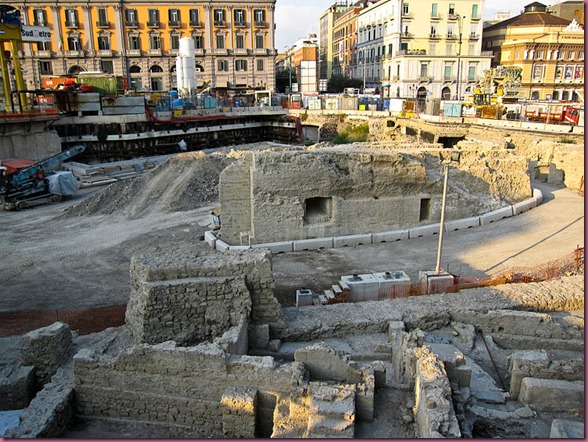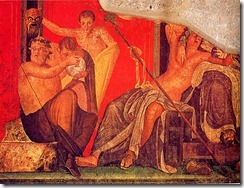FINDS IN NAPLES

Entering the armory’s hall inside the fortress of the “Maschio Angioino” (to the left of palatine chapel) is like going back a thousand years behind the rest of the castle. Here in fact, archaeological excavations have brought to light several layers of the area in Roman times. The glass floor allows you to see the whole room and let you walk over the remains of a swimming pool in a villa of the first century BC, then covered with earth, or other structures of another villa of the imperial era (fifth century ) as it is also interesting the area where dozens of graves were found, some with kits rings and other jewelry, to denote that the area was used as a cemetery in the late Roman era and perhaps until the beginning of the construction of the castle. Moreover, even while working on the construction of Via Acton were found hundreds of skeletons, then placed in a wing of the “Cimitero delle Fontanelle (see the post about this old cemetery). The whole area around Piazza Municipio is one of the places where the physical and historical stratification of Naples is more evident, starting from the ancient greek harbor found after millennia during the first years of work underground, as shown from archaeological sites still open and displaying artifacts from various eras, from Roman times to the Middle Ages.












